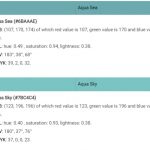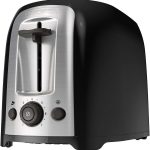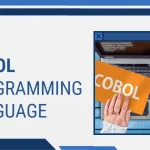A robot is a machine that can do tasks automatically or with help from a human. They are commonly used in manufacturing and other industrial settings, but some robots are designed for home use, such as vacuum cleaners and lawn mowers. Some robots can be controlled remotely, while others are autonomous, meaning they can make decisions on their own.

There are six types of robots, and each one provides a different joint configuration and uses. Here are the kinds of robots that you must know.
Table of Contents
Different Types of Robots
Industrial Robots
This often includes the most basic type of machine – a semi-stationary or stationary device, which performs a repetitive task. Industrial robots generally are some of the least bright and clever because the job they carry out is simple, and the settings wherein they work are free of external influences that can disrupt the routines.
For example, a common industrial robot might be tasked with welding two pieces of metal together. The routine would be programmed into the robot beforehand, and it would carry out the same weld in the same spot, over and over again. In this type of environment, there is no need for the robot to be able to think or react to outside stimuli.
As long as it can perform its welding function correctly, it will continue to do so indefinitely. This is in contrast to other types of robots, such as military drones or self-driving cars, which need to be able to make split-second decisions in response to changing conditions. For industrial robots, however, no such flexibility is required – making them some of the least bright machines around.
Exploration robots
This ranges in complexity from plain probes to totally autonomous spacecraft. This is used in exploring space’s farthest reaches as well as the ocean floor’s darkest trenches.
Some examples of exploration robots are the Mars Rover Opportunity and Remotely Operated Vehicle (ROV), which carry out autonomous jobs while having the ability to be run by a remote pilot or remote operator.
ROVs are vehicles that are operated from a distance by someone on land, in another vehicle, or from another location entirely. They are used in a variety of settings, such as deep-sea exploration, search and rescue missions, and hazardous waste cleanup operations.
ROVs can be equipped with a variety of sensors and cameras to collect data and provide information about their surroundings. They are an essential tool for understanding and exploring our world, and will continue to play an important role in our quest to understand the universe we live in.
Consumer Robots
Consumer robots are becoming increasingly popular as technology advances. This type of robot is very commonplace, and a lot of people are not able to see them as robot. These robots are designed to help around the home, making everyday tasks easier and freeing up time for other pursuits.
Common examples of consumer robots include vacuum cleaners, dishwashers, and laundry machines. While these robots have been available for some time, they have become increasingly affordable and user-friendly in recent years. As a result, more and more people are incorporating them into their homes.
In addition to saving time, consumer robots can also improve the quality of life for those with disabilities or limited mobility. With just a few clicks, these robots can perform tasks that would otherwise be difficult or impossible for their human counterparts. As they become more widespread, consumer robots will likely have a profound impact on the way we live and work.
Medical Robots
Apart from exploration, production as well as menial jobs, robots can also save lives. Medical robots have pushed the boundaries of medicine in terms of what can be accomplished without resorting to risky invasive procedures
This type of robot ranges from autonomous arms, which assist doctors or surgeons in delicate surgeries to the emerging arena of the mind, controlled robotic prosthetics as well as exoskeletons. While you probably won’t see autonomous surgeons for a lot of years to come, medical robots have pushed the limitations of medicine concerning what can be accomplished without the need to resort to risky invasive.
These devices have helped to improve patient care and outcomes, while also reducing the risk of complications. In addition, medical robots have the potential to greatly reduce healthcare costs by increasing efficiency and decreasing the need for human labor. As technology continues to progress, medical robots will likely become even more commonplace in the healthcare industry.
Aerospace Robots
Aerospace robots are a type of robot that is able to fly. This is different from an exploration robot, which does not come with surface rovers or aquatic automation. Popular types of aerospace robots are remotely controlled or autonomous drones, or spacecraft that can be utilized for an array of uses, such as deep space exploration, research, and military intelligence.
These types of robots have many advantages over their terrestrial counterparts. They are able to cover more ground in a shorter amount of time, and they can access areas that would be dangerous or difficult for humans to reach. Additionally, they can be equipped with a variety of sensors and cameras to collect data and conduct reconnaissance.
As the technology continues to develop, aerospace robots will likely play an increasingly important role in a wide range of fields.
Aquatic Robots
This type of robot goes far beyond ocean exploration. There are a variety of different types of aquatic robots, ranging from small robots that can be used for ocean exploration to large robots that can be used by the coast guard as unmanned ships.
Aquatic robots have also been utilized by marine biologists and conservationists to assist in supplementing components of marine ecosystems that have been devastated by climate change and industrialization efforts such as off-shore drilling.
Aquatic robots are an important tool in helping to preserve and protect the world’s oceans and the life within them.





